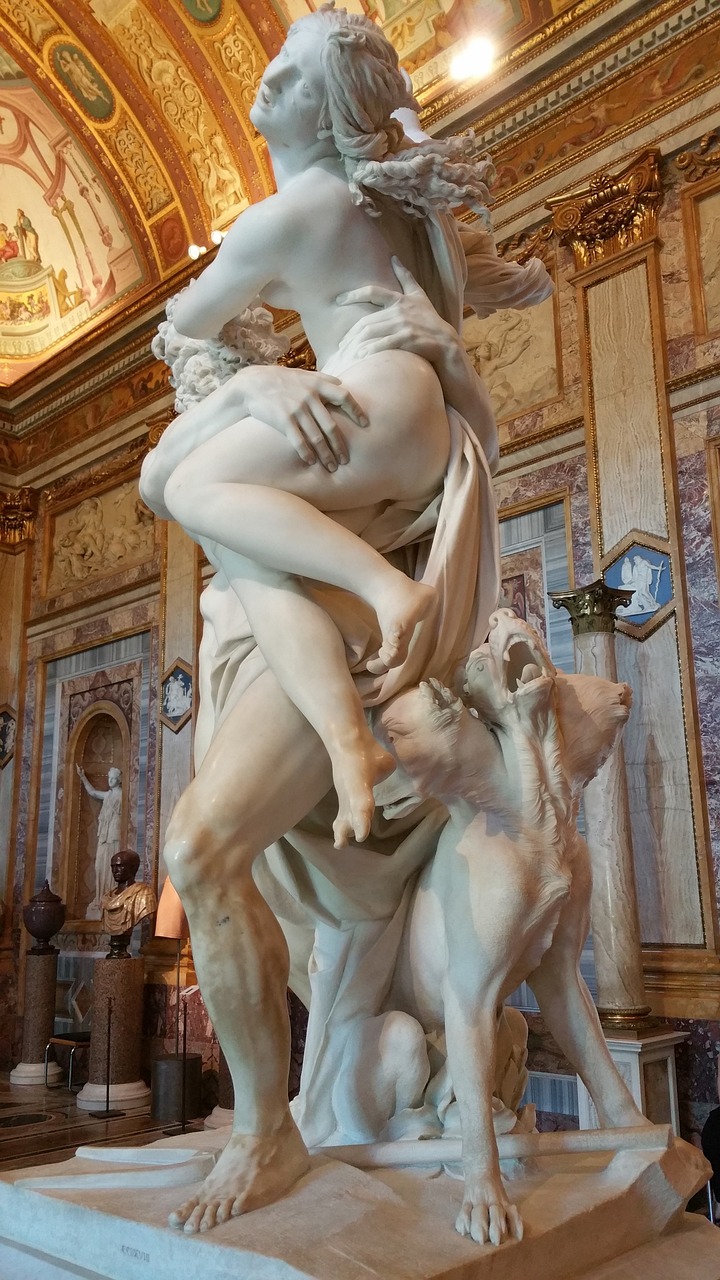The Abduction of Proserpina: A Roman Interpretation
Greek and Roman Names
– Greek: Περσεφονη (Persephonê)
– Roman: Proserpina
– Underworld Gods: Ἁιδης (Hades) / Pluto, Dis
The tale of the abduction of Proserpina, known as “The Rape of Proserpina,” offers a Roman perspective on the story of Proserpina, the goddess of spring, who was abducted by Pluto, the ruler of the Underworld. This narrative draws from various Latin interpretations and is particularly highlighted in Ovid’s “Metamorphoses.” Additional references to this myth can also be found in the works of other poets like Claudian.
The Setting of the Myth
Many of these Roman retellings locate the event predominantly in Sicily, adhering to traditions rooted in the lore of the Greek colonies in southern Italy. The Sicilian landscape plays a vital role in the myth, serving as the backdrop for both Proserpina’s abduction and her mother Ceres’ frantic search for her.
Accounts from Classical Literature
Abduction by Pluto
In Ovid’s “Metamorphoses,” the account begins with a description of the quaking land of Sicily as Pluto, upon seeing Proserpina gathering flowers, falls in love with her and decides to take her to his dark realm. Cupid, following the suggestion of Venus, shoots an arrow into Pluto’s heart to incite this passion.
As Proserpina enjoys the beauty of a tranquil lake surrounded by vibrant flowers, her fate takes a sudden turn. Pluto snatches her away, causing her to call out for her mother and friends in desperation, illustrating the horror of her abduction. The scene unfolds with vivid imagery of chariots racing through the landscapes, merging tranquility with the ensuing chaos of Proserpina’s kidnapping.
Ceres’ Despair
Ceres, Proserpina’s mother and the goddess of agriculture, embarks on a relentless quest for her daughter. Her frantic search spans vast landscapes and deep oceans, marked by profound grief. She ventures through Sicily and encounters Cyane, a nymph who would have revealed the truth had she not been transformed.
The precious token of Proserpina—a sash—becomes a crucial clue, snapped in the waters of Cyane’s pool. This discovery shatters Ceres, leading to a suspension of growth in the world, symbolizing her sorrow. With the absence of her daughter, hunger and despair spread across the land, directly linked to her emotional turmoil.
The Return of Proserpina
In her devastation, Ceres pleads to Zeus, requesting the return of her daughter. Zeus agrees to reunite them on the condition that Proserpina has not consumed anything in the Underworld. However, unbeknownst to them, during her time there, Proserpina had eaten the seeds of a pomegranate, a fact revealed by the envious Ascalaphus who is subsequently transformed into an owl as punishment for his betrayal.
The situation leads to a compromise; Proserpina is permitted to divide her time between the Underworld and the earthly realm, spending half the year with her husband and the other half with her mother. This cyclical return signifies the changing seasons, with her time in the Underworld marking the winter months, and her residence on Earth heralding spring.
References from Other Classic Works
Roman poets and mythographers have also contributed nuanced variations to this story. In Pseudo-Hyginus’s works, the act of seizure is directly attributed to Pluto’s desires, highlighting the perceived destiny of Proserpina. Additionally, Ovid’s “Fasti” provides a poetic recounting of the narrative, marking the emotional journey of Ceres as she grapples with the loss of her daughter.
Virgil, Cicero, and other poets offer their interpretations, solidifying the myth within Roman culture, reflecting themes of despair, motherhood, and the cyclical nature of life and death.
The tale of Proserpina’s abduction speaks volumes about the interplay between love, loss, and the human condition, infusing the ancient narrative with timeless relevance.



